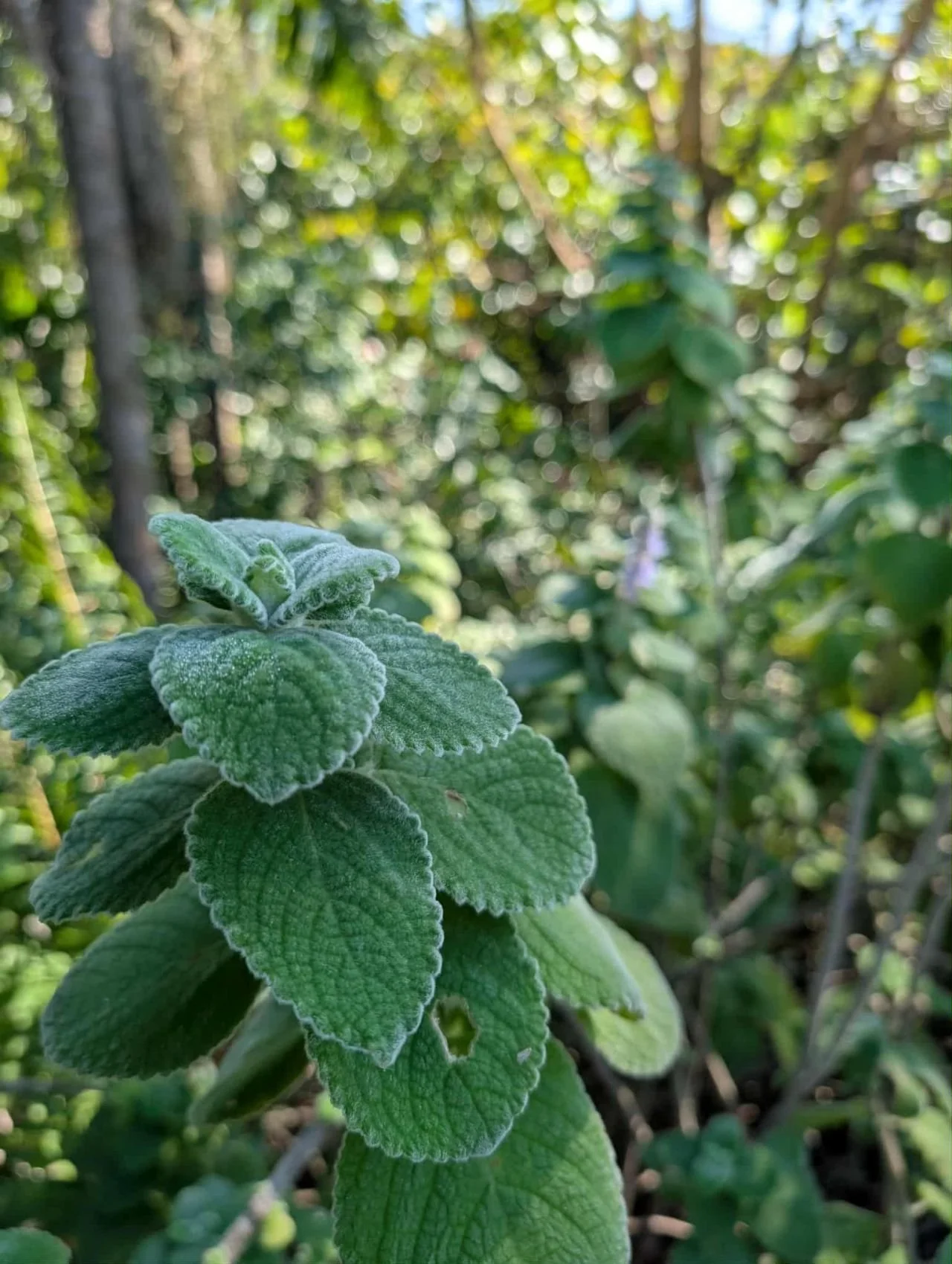Guest Post by Robert WilsonThe Case for Native Australian Species in Garden Design.
Love them or hate them, whether they are Coleus or Plectranthus, whether they feel nostalgic or a little bit "Granny garden", it’s time to take a fresh look at this diverse and under-appreciated genus.
Coleus has a broad distribution across Tropical and Sub-tropical regions of the world, but a special mention should be made for the charm, toughness, tactility and interest of our little native species (more on those later).
Let’s start with the familiar face: Coleus scutellarioides, the Painted Nettle. Spread throughout South East Asia and parts of Northern Australia, this is the garden variety we love (or don’t). It’s loud, it’s loveable(!) and when you look for it, it’s everywhere! Dayglo colours, wild leaf patterns, velvet textures, exotic leaf shapes. There is a cultivar to suit every palette. They are fun to collect, easy to propagate, accessible on any budget, and forgiving under most conditions. Garish or kitsch? Or A bold, herbaceous infill plant that emphasizes tropical plants with almost year round colour and interest! A winner in Brisbane, tolerates a range of conditions but for best colour, plant in dappled light and prevent flowering by dead-heading regularly. A minor few display good foliage colour in full sun (one of these is pictured). They can be standardized, pruned hard, plaited, heeled and generally forced into horticultural submission. For cheap, impactful, full, fast growing, tolerant, tough and vibrant bedding displays; get a hold of some “Painted Nettle” today!
I want to make a bigger case, one that speaks further to scent, texture, and mood in our gardens.
Australia’s native Coleus/Plectranthus species are not only beautiful: they’re powerfully sensory, and critically underused. Unlike their bright exotic cousins, native Coleus don’t shout. They enhance the pomp and circumstance of their big brothers and sisters in the garden. They support bold colour (or enhance earthen tones), radiate scent, and invite touch. They offer subtle leaf shapes, aromatic foliage, ease of maintenance, and floral displays that surprise in the dappled light. These aren’t feature plants; they’re the glue in a planting design. A skilfully selected and beautifully designed frame will enhance any artwork. They deserve far more love.
Let’s explore a few that bring scent, tone, and tactility into the spotlight:
Coleus argentatus (Silver Coleus)
This soft, silvery shrub shimmers in the shade. The foliage has a suede-like feel that begs to be touched, and its tall spikes of white, mauve, or soft blue flowers make it a beautiful alternative to lavender, especially in subtropical beds where lavender may fail. It’s cooling, calming, and quietly luminous. With its bright foliage and reliability in lower light conditions- perfect for brightening a shady or dull corner of the garden!
Coleus graveolens (Bush Basil)
A plant of surprising depth. Thick, textured leaves with a bright lime green tone and a strong, resinous aroma, somewhere between basil, mint, and native herbs. The foliage feels almost succulent under the fingers, while its purple-blue flowers rise up on soft stems. It brings density, texture, and fragrance to native garden designs. Large, intricately veined leaves provide the perfect foil to bold native wildflowers such as Grevillea or Hibiscus.
Plectranthus nitidus EN (Nightcap Plectranthus)
A small, endangered rainforest species that absolutely glows in low light. Glossy green leaves with maroon undersides and stems, a crisply toothed margin, and elegant leaf venation make it one of the most beautiful bedding plants for shady areas. Its flowers are like tiny chandeliers, twinkling purple and white across the understory. Want to see it? Gold Coast Regional Botanic Gardens has it planted in sweeps and mounds beneath rainforest trees; an absolute masterclass in subtle beauty.
Coleus bellus Rare (Coleus “Mount Carbine”)
Tall, tactile, and bursting with lemon-sherbet scent. Its velvety leaves carry a rich citrus aroma that releases as you brush past. This is a plant for people who understand gardens as spaces to feel as well as look. It makes a fantastic sensory border, cut it back hard, enjoy the soft flushes of new growth, and let it do the work lambs ears can’t do in the tropics and sub-tropics. Or let it standardise for a quivering display of electric green texture in the back of a bed. While not a showy flowerer, C. bellus sports a delightful and reliable sky blue flower.
Coleus alloplectus EN (Slenderleaf Hullwort)
This is my favourite; tough, bronzed, and full of personality. Its new growth bursts in tones of gold, copper and bronze, it sets the stage for bold spikes of purple flowers. It thrives under pressure, responds beautifully to pruning, and pairs exquisitely with native garden design tones: olive, parchment, drab, stone, silver and dun. It’s a complementary gem with year-round interest.





